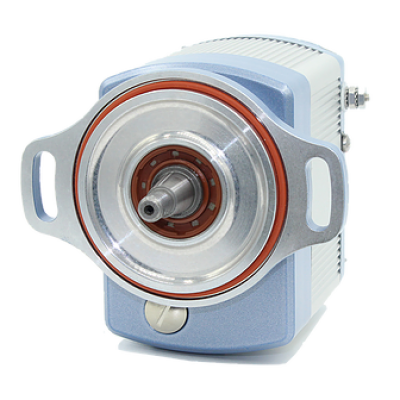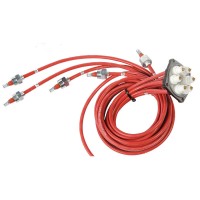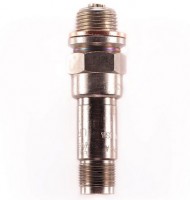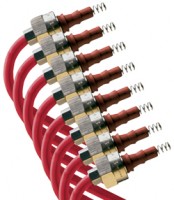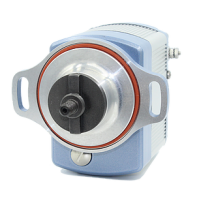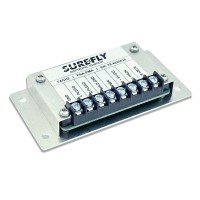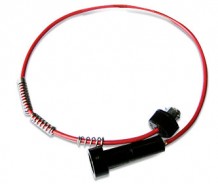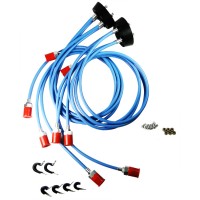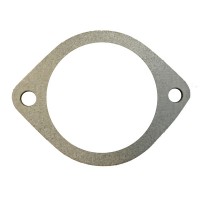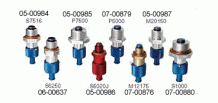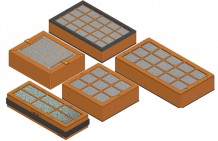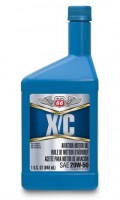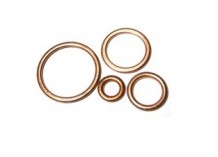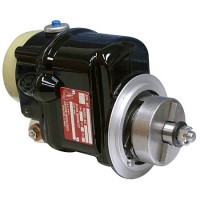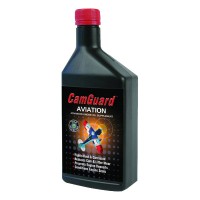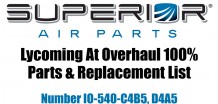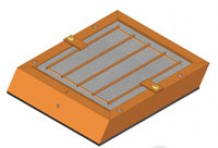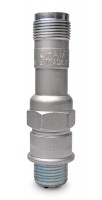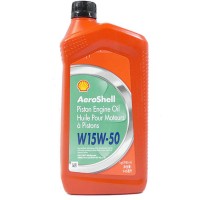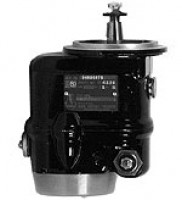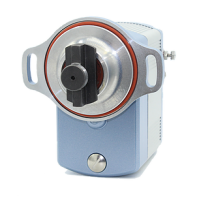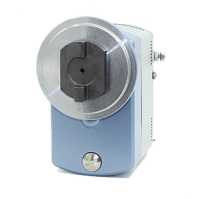SureFly SIM4N 4 Cylinder Non-Impulse Magneto Replacement
MFR Model# SIM4N
 FREE Shipping
Item qualifies for free outbound shipping. Please note other excluded items on the same order may incur a freight charge. Free shipping must be selected in cart for promotion to apply.
FREE Shipping
Item qualifies for free outbound shipping. Please note other excluded items on the same order may incur a freight charge. Free shipping must be selected in cart for promotion to apply.
Overview
Replaces 4-cylinder non-impulse coupled magnetos on Lycoming & Continental engines. 4.0 lbs.
|
WARNING: Cancer and Reproductive Harm - www.P65Warnings.ca.gov. |
Features
ReliabilityFor SureFly customers, 500 hours is simply not good enough. SureFly Ignition Modules provide operators a 2,400 hour operating service time. No inspections, no rebuilds, no overhauls. That prevents scheduling headaches and down time. That saves money. Period.
Safety
SureFly Ignition Modules have no mechanical parts that wear and all solid-state electronics. There's no need to disassemble a SIM like a magneto every 500 hours - which eliminates the chance of introducing a maintenance related failure.
Performance
SureFly Ignition Modules deliver a more consistent spark energy with higher accuracy than traditional magnetos. Variable timing advance provides SureFly customers real fuel savings. Low power consumption and light weight (up to 2 lbs. lighter than a Bendix magneto) make SureFly Ignition Modules light on fuel and light on the wallet too.
Better Starts
SureFly perfectly controls timing at TDC below 400 rpm which combined with longer spark dwell and the option to use wider gapped spark plugs, makes starting a breeze, greatly minimizing wear and tear on high performance starters and electrical systems.
Trusted
SureFly Ignition Modules are hand built in Granbury, Texas almost entirely from components manufactured in Texas and Michigan. Designed, engineered, created and supported by the same team that brought you Sky-Tec starters and Plane-Power alternators, our approach to SureFly shares the same commitment, experience and passion for creating and bringing sensible, affordable solutions to the piston engine aviation market.
Value
With the low cost of the units, combined with SureFly's potential fuel savings and low maintenance/replacement costs, there is simply no better value in magneto replacements for Lycoming and Continental engines.
Specifications
- Aviation spark plugs – gapped .016 to .036
- Slick style harness – Shielded aviation harness
- Input voltage 6-30 volts
- Avg. Current @2700 500mA
- Retards spark to TDC for starts
- Up to 38 degrees Ignition advance – RPM & MP based
- Hall Effect sensors provide velocity and position input
- Manifold pressure sensor range – 6-74 inHg
- Operational temp range -35 to 250 F
- Minimum MTBF 2000 hrs
- No interval inspections
- RPM range 0-3500
- Voltage to bridge .036 spark plug gap
- Minimum 35mJ spark energy
- 50mJ nominal energy
Benefits
- Intelligent Timing Advance
- All SureFly SIMs can be configured to operate in either fixed or variable timing. Variable timing controls spark advance up to 38º before TDC as determined by manifold pressure and RPM (engine power setting). Each engine's base timing advance is read off the data plate and set into the SureFly Ignition Module or, "SIM" at installation. The timing advance schedule is hard set at the factory, when the SIM is manufactured, to provide the highest possible combustion efficiency.
- 1. Normally aspirated,
- 2. Have Cylinder Head Temperature (CHT) monitoring capability,
- 3. Use minimum of 100-octane low lead aviation fuel.
- No Mechanical Points
- Not only are points and condensers a point of failure in magneto ignitions, so are rotors and caps as they carbon track and provide alternate paths to ground as resistance builds in the system. That's why SureFly utilizes none of these antiquated technologies. SureFly components are all solid state and industrial-grade electronics.
The result is zero maintenance, zero overhauls, no rebuilds, and no maintenance costs whatsoever! Nothing to wear. Nothing to maintain. Run it to 2,400 hours of SIM operation.
Documents
- Read Before Installation
- Installation Information
- For the most accurate and up to date information see SureFly FAQs
Eligibility
View the latest eligibility chart at SureFly.aero Application GuideIf any of the following items apply to your installation, please call SureFly at 817-373-5161 before proceeding with the purchase or installation of a SureFly Ignition Module:
- Your aircraft tachometer is one of the following:
- Horizon,
- Electronics International,
- EFIS or Engine Monitor that requires magneto P lead inputs,
- EFIS or Engine Monitor that requires a 0-5 volt square wave input,
- Your aircraft has more than one engine,
- Your aircraft has an existing electronic ignition,
- Your aircraft has one of the following STC’s:
- Western Skyways Turbo STC,
- Auto Fuel STC.
Frequently Purchased With
Customers Also Viewed
Related Items
Reviews
Surefly SiM4N 4-Cylinder Non-Impulse Magneto Replacement
No problem.
Surefly SiM4N 4-Cylinder Non-Impulse Magneto Replacement
not fitted yet
Surefly SiM4N 4-Cylinder Non-Impulse Magneto Replacement
Some additional information on using the Surefly SIM. Ive modified my mag check procedure to avoid any stumbling and backfires when the SIM is turned off and on again. Since this only seems to happen above 1000 RPM, I take the engine down to idle before turning the SIM off or on i.e. advance the throttle to normal mag check RPM, check carb heat, turn switch left one position to see the drop on the left ignition (Mag), reduce RPM below 1 K, turn switch one more notch to the left so the right ignition (SIM) is running, advance the throttle to check its operation, reduce throttle below 1K again, then turn the ignition back to both. I compare throttle positions for each ignition position to verify they meet the requirements for safe operation.
Easy to install...only add a power wire
My IA and I installed a SIM4N in my Piper Archer. It took the two of us about a full day to do the install, largely because part of the planes interior was removed to run about 12 feet of 12 guage wire between the battery and the SIM. We also had to round up a gear puller to transfer the right magnetos drive gear between it and the SIM replacing it, and remove the grounding tab on the starting switch so the engine would start on the SIM as well as the impulse coupled mag on the left. Keeping the impulse coupled mag is not Sureflys first choice for install but it made economic sense in this case because the left mag had been recently rebuilt and it was about time for the right mags overhaul. So far I have two flights with the SIM installed. The starts are quicker and smoother and require less prime, the bottom cold idle moved up from a slightly uneven 550 to a smooth 650, and the 2300 RPM low altitude lean cruise fuel flow dropped from 6.8 to about 6.5 gph. Im expecting to see a greater fuel % savings when I fly at higher RPMs at a greater altitude. As you can probably, tell Im happy with this product!
I have about 30 hours on this installation on an O-360 powered Maule. The installation was a bit tricky because the SIM is larger than a Slick 4300. I ended up having to replace an oil line fitting and do some re-routing but thats an engine specific issue. The aircraft starts amazingly well now, so I am very pleased about that. As a drop in replacement for a mag, its 4-5 stars, only gripe is the lack of a hose barb. If you are looking for variable timing upgrade this is a 3 star product. One of the things that drew me to the Surefly SIM was the advanced timing but now that I have some hours behind, I have switched it back to fixed timing and it will stay that way. I fly out of an airport at 6800ft MSL in Colorado and during most summer mornings the DA is anywhere from 8000-9000ft. This equals about 21 of MP at takeoff, which happens to be about where the SIM goes to its full advance of 38 degrees regardless of RPM per the techs at Surefly. As the weather warmed up I noticed that the plane had a significant lack of power when compared to how it flew in similar conditions with two Slicks. 300-400 FPM climb vrs about 700 on a high DA day. After taking to Surefly and finding that the SIM was running at a full 38 degrees of advance even at 2700RPM at takeoff, I switched it back to fixed timing and my power immediately came back. I spent a substantial amount of time reading up and what I am finding is if you are looking for best power rich of peak (at takeoff, in this case) a significant timing advance will cause a loss of power and high CHTs. My experience seems to support this. I have no doubt that lean of peak the advance feature is great to have at high altitude cruise, but if you are trying to take off from 7000-8000ft runways in anything over standard temp, you will not like the performance. As a drop in replacement for a Slick, I am very happy. As a drop in upgrade for advanced timing for aircraft that live at high elevations, look else where.
surefire mag is not complete. you have to buy hose and brass barb, that doesnt come with it. dumb. It would only cost them $5 to include it. Called Tech support about buying AN816 fitting for manifold pickup and hose, was told cant as it wouldnt be FAA approved. WTF?
Q&A
Please note, Aircraft Spruce's personnel are not certified aircraft mechanics and can only provide general support and ideas, which should not be relied upon or implemented in lieu of consulting an A&P or other qualified technician. Aircraft Spruce assumes no responsibility or liability for any issue or problem which may arise from any repair, modification or other work done from this knowledge base. Any product eligibility information provided here is based on general application guides and we recommend always referring to your specific aircraft parts manual, the parts manufacturer or consulting with a qualified mechanic.
This can be used WITH the shower of sparks system. AKA, Surefly on the right, shower of sparks on the left. All you have to do is remove the jumper on the back of the ignition switch which would only allow the Bendix to be used during start.
First off, a standard mag does not advance beyond the fixed setting assigned to it. The SureFly starts there, and stays at base timing during high power operation. When power is reduced such as cruise and/or high altitude, the timing advances using RPM and MAP inputs. In this case, the SureFly will fire well ahead of the other mag, and leaves the standard mag doing clean-up duty, so to speak. Not having both plugs fire at the same time is not an issue.
Per Surefly: The power wire should run from the battery. The fuse should be located in close proximity to that connection. We don't need a circuit breaker or a switch added to the system. The ignition switch prevents any power drain when the aircraft is shut down.
Yes there will be a parasitic drain on the battery roughly equivalent to slightly less than a electric clock would be. If the aircraft sets for months at a time without charging the battery the SIM could drain the battery to the point that it wont have enough capacity to turn the starter. Battery condition has a lot to do with it as well as operational conditions and storage. If the aircraft is going to sit for months at a time it is a simple matter of disconnecting the battery or removing the fuse from the holder to prevent it from draining the battery.
Unfortunately there is not. The smallest engine the Surefly will work with is the c-75.
You would install it as a left or right mag, so it would fire as a |normal magneto set up.
The SureFly requires at least 8 volts to operate. If the battery and alternator totally fail, you will lose the SureFly.
The shower of sparks can be removed when a SureFly is installed. It would be of no use whatsoever. If the other mag has a shower of sparks (unlikely), it can remain as is.

